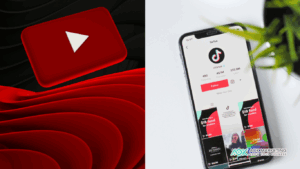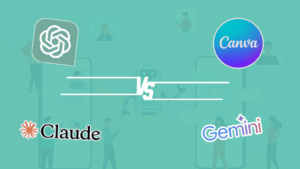When launching an influencer marketing campaign, one of the most critical decisions brands must make is selecting the right type of influencer. Influencers come in different shapes and sizes, and each group brings unique advantages based on the brand’s goals and target audience. Understanding the distinctions between these types of influencers can help companies create more effective campaigns that resonate with their customers.
Influencers are generally categorized into four main groups: mega-influencers, macro-influencers, micro-influencers, and nano-influencers. Each category offers specific advantages and challenges, so selecting the appropriate one depends on factors such as budget, reach, engagement, and authenticity. Let’s explore each type in detail.

A. Mega-Influencers: Maximizing Reach and Visibility
Mega-influencers are the top tier of influencers in the digital world. These individuals typically have followings of 1 million or more on platforms like Instagram, TikTok, or YouTube. Often celebrities, athletes, or public figures, mega-influencers can generate enormous exposure for brands.
Advantages:
Massive Reach: The most significant benefit of working with mega-influencers is their immense reach. Their content can easily go viral, helping brands gain substantial visibility in a short period.
Brand Awareness: If your goal is to create brand awareness and gain quick traction in the market, mega-influencers are the ideal choice. Their broad reach makes them effective in introducing new products to a vast audience.
Media Attention: Partnering with a celebrity or public figure can also attract media coverage, further amplifying the campaign’s reach beyond social media.
Challenges:
High Cost: Mega-influencers can command significant fees for partnerships, making them expensive. Their large following often means higher rates for sponsored posts, making it less feasible for smaller businesses.
Less Personal Engagement: Despite their vast audience, mega-influencers tend to have less intimate relationships with their followers. As a result, the engagement rate might be lower compared to smaller influencers, and their endorsements may not feel as personal or relatable.
Wide but General Audience: While mega-influencers can reach millions, their audience may be more generalized, meaning that only a portion of their followers will align with your brand’s target demographic.
B. Macro Influencers: Balancing Reach and Engagement
Macro-influencers are the next tier down, with followers ranging between 100,000 and 1 million. Unlike mega-influencers, macro-influencers often build their followings through content creation in a particular niche. They are regarded as experts or authorities in their fields and often offer a balance of reach and engagement that is more targeted than mega-influencers.
Advantages:
Niche Authority: Macro-influencers tend to specialize in specific niches such as fitness, beauty, travel, or tech. This makes them highly effective for brands looking to reach audiences within a particular interest area.
High Engagement: While their reach is not as broad as mega-influencers, macro-influencers often have a stronger connection with their audience. Their content tends to generate higher engagement rates, which can lead to more meaningful interactions with the brand’s target audience.
More Affordable: Compared to mega-influencers, macro-influencers typically charge less for sponsored content, making them a cost-effective option for brands looking to maximize impact within a specific budget.
Challenges:
Mid-Level Costs: Although more affordable than mega-influencers, macro-influencers can still be relatively expensive, especially for smaller businesses. They are ideal for medium to large-scale campaigns but may not fit every budget.
Less Personalized: Macro-influencers can reach a large audience, but their relationship with followers is not as intimate as that of micro or nano-influencers. While they are more relatable than celebrities, the personal touch may not be as strong.
C. Micro-Influencers: Authenticity and Niche Appeal
Micro-influencers are individuals with a following between 10,000 and 100,000. While their audiences are smaller compared to mega- and macro-influencers, micro-influencers often have highly engaged followers who trust their recommendations. They tend to focus on specific niches and are regarded as experts or thought leaders in their areas of interest.
Advantages:
High Engagement Rates: Micro-influencers typically have higher engagement rates than mega or macro-influencers. Their followers view them as relatable and authentic, which leads to deeper interactions. Brands often see a higher return on investment (ROI) with micro-influencer campaigns due to this authenticity.
Cost-Effective: Micro-influencers tend to be more affordable than their larger counterparts, making them a great option for brands with smaller marketing budgets. Partnering with several micro-influencers can be an effective way to spread the brand message across multiple niches without the high cost of a single mega-influencer.
Targeted Audience: Micro-influencers often cater to highly specific niches, allowing brands to target audiences that align closely with their products or services. This makes micro-influencers ideal for reaching smaller, more focused communities.
Challenges:
Limited Reach: The main drawback of micro-influencers is their smaller reach. While they excel in engagement, their audience size may not be large enough to achieve broad awareness quickly. If your primary goal is mass exposure, micro-influencers might not be the best fit.
Management of Multiple Influencers: To reach a broader audience, brands may need to collaborate with multiple micro-influencers. This can be more challenging to manage logistically, as it involves coordinating with several influencers rather than just one or two.
D. Nano-Influencers: Hyper-Local Engagement
Nano-influencers are the smallest tier of influencers, with fewer than 10,000 followers. While their audience may be limited in size, nano-influencers often have hyper-engaged communities. Their followers see them as everyday individuals who are relatable and trustworthy, leading to highly personalized interactions.
Advantages:
Strong Community Connection: Nano-influencers often have a close-knit relationship with their followers. Their content feels genuine and unfiltered, and their recommendations are often seen as personal endorsements, rather than paid promotions.
Affordable Partnerships: Nano-influencers are highly cost-effective, making them an ideal choice for small businesses or brands with limited marketing budgets. Their lower fees allow companies to experiment with influencer marketing without a large financial commitment.
Localized Campaigns: Nano-influencers are especially effective for localized campaigns where a tight-knit community is more valuable than a large, global audience. For example, a local business promoting an event or a product launch in a specific geographic area would benefit from the hyper-local engagement that nano-influencers provide.
Challenges:
Limited Reach: Nano-influencers’ small followings mean their campaigns will not reach a massive audience. They are better suited for campaigns that prioritize quality over quantity and work best for brands focused on specific, localized markets.
Managing Multiple Influencers: Like micro-influencers, nano-influencers require working with multiple individuals to scale up the campaign. This can involve additional time and effort in managing relationships, contracts, and content approvals.
Conclusion: Choosing the Right Type of Influencer
Each type of influencer offers distinct benefits depending on your brand’s goals and target audience. For mass exposure and high visibility, mega-influencers may be the right choice, despite the higher cost. Macro-influencers offer a balance of reach and engagement, while micro-influencers deliver authenticity and cost-effective campaigns. Nano-influencers, though limited in reach, can foster deep, personal connections and are ideal for hyper-localized efforts.
Ultimately, the success of an influencer marketing campaign depends on choosing the right type of influencer for your brand’s specific objectives. Whether you prioritize reach, engagement, authenticity, or budget, there’s an influencer out there who can help you achieve your marketing goals.
About The Author
Jana Legaspi
Jana Legaspi is a seasoned content creator, blogger, and PR specialist with over 5 years of experience in the multimedia field. With a sharp eye for detail and a passion for storytelling, Jana has successfully crafted engaging content across various platforms, from social media to websites and beyond. Her diverse skill set allows her to seamlessly navigate the ever-changing digital landscape, consistently delivering quality content that resonates with audiences.





